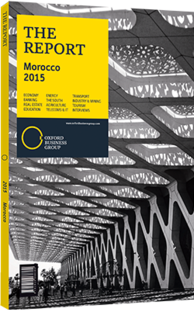Tas Anvaripour, CEO, Africa 50 Fund: Interview

Interview: Tas Anvaripour
What are the biggest challenges for financing infrastructure projects in Africa?
TAS ANVARIPOUR: Some African governments have successfully raised funding on international capital markets, as well as from growing pools of domestic capital, such as pension funds. Much of this funding has been used to finance critical infrastructure, particularly in transport and energy. International finance institutions have invested in public infrastructure as well as public-private partnerships (PPPs) across the continent, and partners from China and Brazil have taken on partnerships with African governments to build roads, airports and industrial facilities.
But this is not enough. Government and other sources of finance make up most of the roughly $50bn annual investment in Africa’s infrastructure. Private sector capital flows remain a minority of overall investments. There remains an annual shortfall of almost $50bn. Investors need recognised and bankable structures and vehicles through which to invest. It is important to design structures that appeal to investors and projects that are commercially attractive. Currently, only a small number of transactions of sufficient scale reach the market. Project development prior to construction takes 7-10 years on average. Bottlenecks exist in many different areas, from early-stage funding to policy decision-making. New strategies are required to bridge this gap between projects and the capital markets.
What are the largest risks when funding long-term, large-scale infrastructure projects?
ANVARIPOUR: There is a large gap between the perceptions of risk and the reality on the ground. In Africa, successful PPPs or privately-run projects have yielded returns of 16-18% over the past decade. African projects have a low history of default: according to Moody’s, Africa has the lowest project default rate compared to other regions. This is reflected in the experience of the African Development Bank, which since 2006 has invested in 49 infrastructure PPPs or privately-run projects facilitating $32bn of investment on the continent, and not one loan repayment has yet been defaulted on.
However, institutional investors invest in structures and instruments they understand and that fit their strategy. Typically, in Western countries, institutional investors target infrastructure assets in stable regulatory environments: these offer annuity incomes with legal protection. While there are similar opportunities in Africa, institutional investors are most likely to find the risk-weighted returns and scale they require from a diversified portfolio of well-structured projects.
In terms of project preparation and development, why is Africa more challenging than elsewhere?
ANVARIPOUR: One of the biggest challenges for infrastructure development that sets Africa apart from other continents is lack of capacity at the government level. This includes lack of human capacity, in the form of experienced transaction advisors with the ability to structure projects and a true understanding of the risk and reward sharing mechanisms between the public and private sectors. Most African governments identify two to three projects that are urgent, whose absence hinders economic growth. Large-scale national projects have an average value of about $500m, and since the development capital for projects in Africa is usually about 10% of their value, this requires an investment of $50m. In many countries, there are no financial resources available for this at the government level.
Project development must also be backed-up by project finance. In other regions, there are domestic sources of capital available from national development banks and local commercial banks. As markets have scaled, local pension funds and international investors have taken notice. Africa is behind in many respects, particularly in its over-reliance on development finance institutions. Ultimately, this equates to delays and more rigid project structures. Adopting a more commercial approach and encouraging interaction with developers can ensure that projects reach the market quicker.
You have reached the limit of premium articles you can view for free.
Choose from the options below to purchase print or digital editions of our Reports. You can also purchase a website subscription giving you unlimited access to all of our Reports online for 12 months.
If you have already purchased this Report or have a website subscription, please login to continue.

